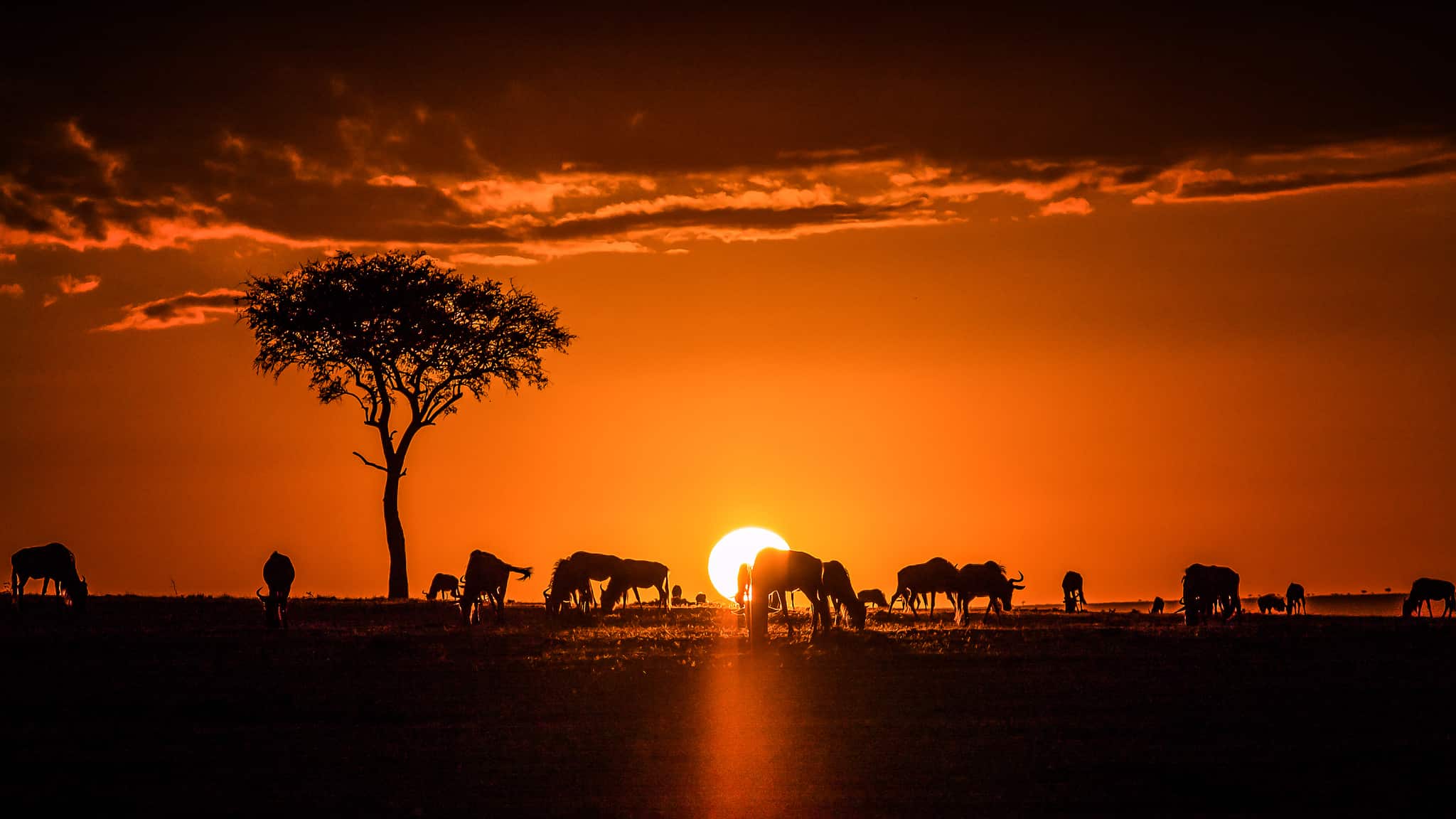By Bruce Kemp
The female leopard and her cub caught a small black-faced monkey. They dragged it onto a fallen tree eating it quickly before disappearing into the bush. My driver, Duncan, told me not to pack my equipment. “She’ll come out of the bush on the game trail just up the track,” and she did – passing within three metres of the front of our van before pausing to pose in the failing light.
 https://www.flickr.com/photos/sufw/
https://www.flickr.com/photos/sufw/
I was on the last day of a photo safari in Kenya’s Samburu National Park. So far I’d photographed three of the Big Five (lion, leopard, cheetah, elephant and rhino). I was too far north to see cheetahs and the white rhinos were nowhere to be found despite having driven hundreds of kilometres over bush roads.
 Bruce Kemp
Bruce Kemp
In the morning I’d be on my way to Sweetwaters Tented Camp in the private Ol Pejeta Game Park near Aberdare National Park.
Sweetwaters is roughing it like you’ve never roughed it before. The tents feature electricity, hot water and indoor plumbing. Each canvas bedroom looks out over a watering hole that is visited nightly by a range of animals from lions simba in Swahili to baboons (nyani). But, the star attraction here is the rhino (kifaru).
Ol Pejeta is a black rhino sanctuary. Poachers have hunted these battle tanks of the bush to near extinction. They are out there in the bush, but we were lucky because we could approach a rescued rhino who’d become tame. He was so solid, it was like touching a rock.
After a night of sounds straight out of a Tarzan movie I got ready to move again as Duncan reminded me the Maasai Mara awaited.
Road Trip
Like much of Canada, most stretches of African road can’t be covered at 100 kph. Kenya is the world champion of pot holes, so 100 kilometres can take four hours to cover.
Our route took us down through the verdant Great Rift Valley toward Lake Nakuru.
When I first arrived in East Africa, I was disappointed. I thought we’d be travelling in heavy duty 4 X 4s. Instead, we used two-wheel drive passenger vans with pop-tops to shoot photos from. The reason for these became very apparent when we hit Lake Nakuru’s soda flats.
 Bruce Kemp
Bruce Kemp
Nakuru attracts millions of flamingos to gorge on brine shrimp. The shrimp are the only animals that live in Nakuru and their pink colouration give the flamingo their flamboyant colour.
Our rear tires broke through the flats’ soda crust sinking axle-deep in smelly goo. Had we a four-wheel drive vehicle, it might have gone through with the front wheels as well requiring an intervention from other drivers in the area. Millions of squawking pink feather dusters laughed their feathers off at us as we got out to push.
Maasai State Of Mind
 https://www.flickr.com/photos/wwarby/
https://www.flickr.com/photos/wwarby/
The Maasai Mara is a state of mind as well as a geographic entity.
You enter Maasai Mara National Park through one of several gates shaped like the boss of a Cape buffalo’s horns. Once in the park the world spreads out full of zebras (punda milia) and Thompson gazelles, Impalas and cheetahs. Vast herds of Cape buffalo and wildebeest dominate a rolling landscape that stretches beyond the horizon.
Part of a great central plain running north from South Africa through Tanzania and into Kenya, this savannah is known by various names – most famously the Serengeti. Kenyans call their part of it the Maasai Mara after the tribesmen who make it their home.
 https://www.flickr.com/photos/stormsignal/
https://www.flickr.com/photos/stormsignal/
It’s not unusual to drive through miles of bush to stumble on a boma – a village enclosed by walls of acacia thorns – or a squad of Morani (Maasai warriors) loping along at an easy run while singing marching songs without so much as a tiny wheeze.
Every spring wildebeest congregate and head north into the Maasai Mara. They migrate the length of the great plain following the rain and grazing. Along with wildebeest, come cheetahs (duma), lions and hyena (fisi).
Aside from their peculiar beauty, the wildebeest are a moving feast. An entire ecology follows them. Even the crocodiles wake up to dine twice a year as herds splash across the Mara River on the Tanzanian border.
It’s tough to describe it all. Suffice it to say, the Mara has animals, scenery and a number of five-star, low-impact lodges like the Maasai Mara Sopa and Keekorok.
Mountain Magic
After three days scouring the plains for lions, elephants, cheetahs, rhinos and ostriches as well as a hundred other animals and birds, we left our digs at the Mara Sopa and continued southeast to Lake Amboseli.
Travellers are treated to big herds of elephants (tembo), occasional hippopotami and giraffe (twiga) at Lake Amboseli. But the real reason you come to Amboseli is to see Kilimanjaro.
Rising from the plain like an earth-god the mountain sits alone, disdainful of company. With three distinct peaks, it’s so big it develops its own climate. King Solomon’s nephew – Menelik – is reputed to have journeyed here to die, Hemingway wrote about it and one of the unsung battles of the First World War was fought around its base.
It makes a spectacular backdrop for animal pictures and anyone capable of sitting still long enough to watch the ever-changing ballet of light across its face will be rewarded with one of those memories experienced travellers live for.
For more information, visit www.MagicalKenya.com


